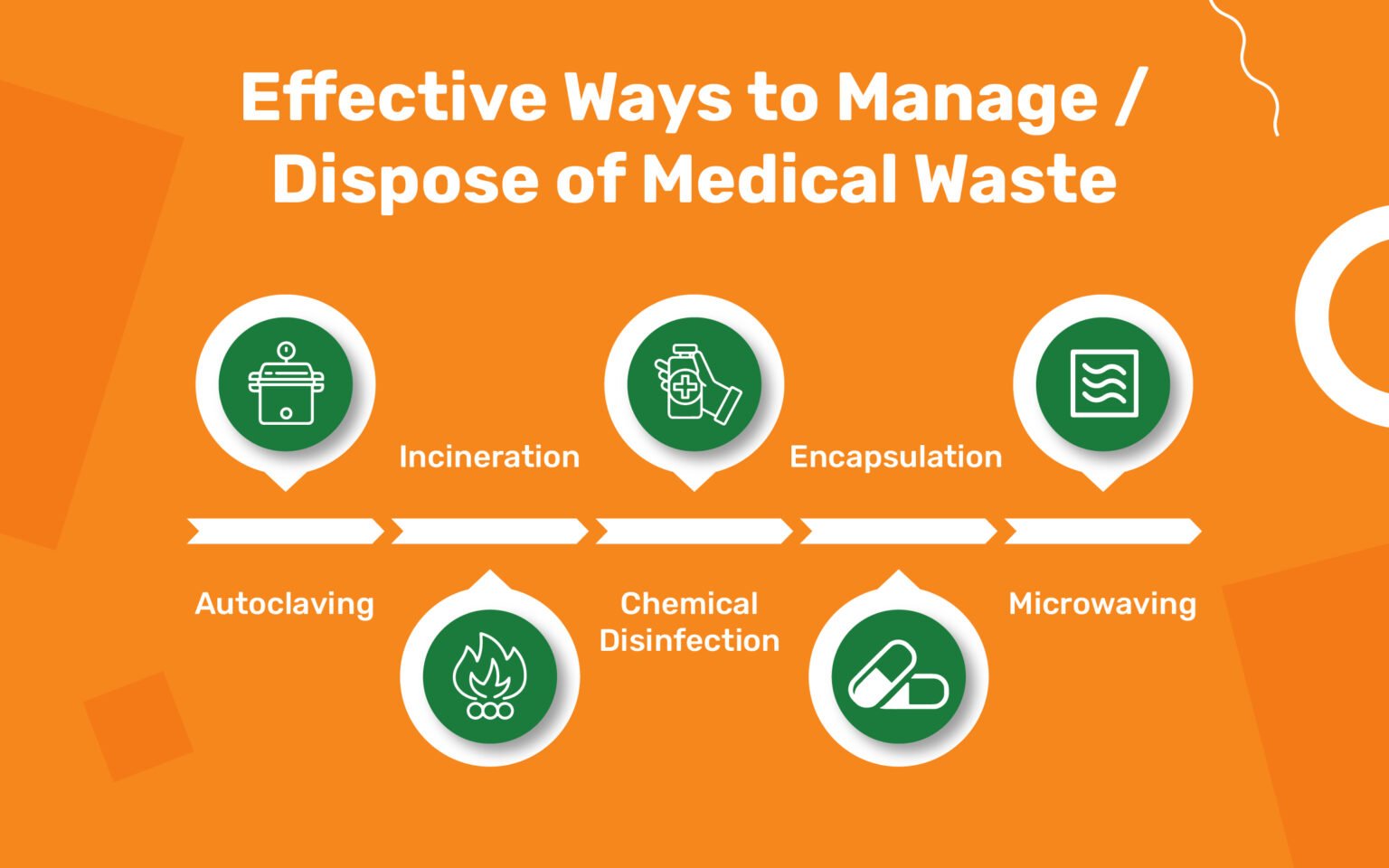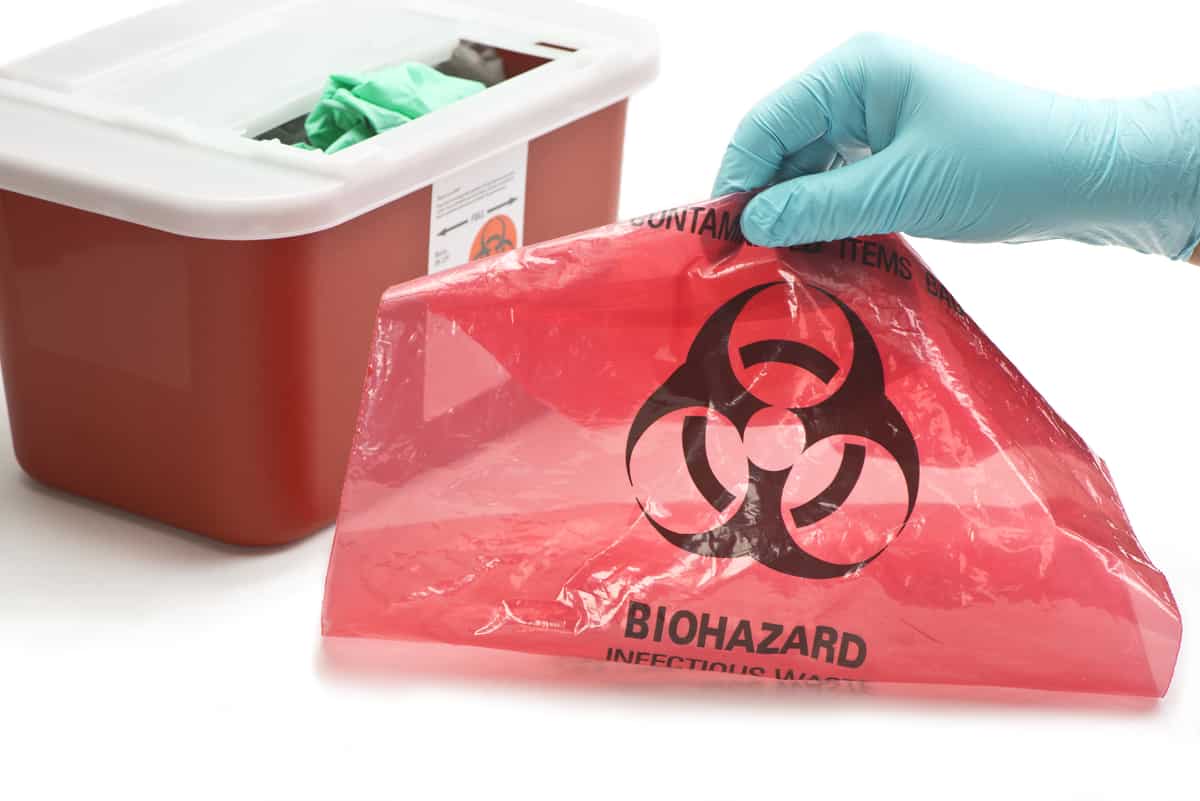Medical Waste Removal Mastery: Where Service Excellence Meets Health Specifications
The Relevance of Proper Clinical Garbage Disposal: A Guide for Healthcare Facilities
Proper clinical waste disposal is a vital facet of health care facility management, making sure the security and well-being of patients, team, and the atmosphere. From recognizing the various categories of clinical waste to following governing demands, healthcare facilities must take on effective waste partition practices and pick proper disposal approaches. Nonetheless, the value of appropriate medical waste disposal surpasses simple conformity; it is a responsibility that calls for recurring training and education for staff. In this guide, we will check out the various aspects of clinical waste disposal and highlight the essential steps that medical care facilities must take. By implementing these practices, healthcare facilities can alleviate threats, protect public health and wellness, and add to a cleaner, more secure environment.
Comprehending Medical Waste Categories
Comprehending medical waste classifications is vital for correct disposal in medical care centers. Clinical waste is a wide term that includes different kinds of waste produced in medical care setups, such as clinics, laboratories, and medical facilities. Categorizing medical waste aids make sure that it is managed, stored, and disposed of securely and in accordance with applicable laws.
There are a number of categories of clinical waste that health care centers need to be familiar with. These categories consist of infectious waste, sharps waste, pharmaceutical waste, chemical waste, and contaminated waste (medical waste disposal services with WasteX). Each group has certain qualities and calls for different disposal methods to lessen the threat of injury to healthcare employees, patients, and the environment
Contagious waste, for example, refers to squander contaminated with potentially transmittable products, such as blood, body liquids, and tissues. Drug waste consists of ended or unused medications, while chemical waste consists of harmful chemicals utilized in medical treatments.
Conformity With Regulatory Requirements
Healthcare centers have to guarantee compliance with governing demands for correct medical garbage disposal. Regulative bodies, such as the Epa (EPA) and the Occupational Safety and Wellness Management (OSHA), have developed regulations and guidelines to secure public health and the atmosphere. These regulations lay out the appropriate handling, storage, transport, and disposal of medical waste.
Conformity with regulative requirements is essential for health care centers to prevent lawful charges, reputational damages, and prospective injury to human health and wellness and the atmosphere. Failure to abide with these policies can cause fines, legal actions, and even the suspension or revocation of running licenses.
To guarantee conformity, health care centers ought to develop comprehensive waste administration programs that consist of staff training, appropriate waste partition, and the use of ideal containers and labels. Routine audits and inspections must additionally be conducted to determine any kind of non-compliance issues and address them without delay.
It is vital for medical care facilities to stay up to date with modifications in regulations and update their waste administration techniques as necessary. This can be achieved by actively checking updates from regulative bodies and taking part in training programs and workshops.
Implementing Efficient Waste Partition Practices
To make sure proper medical waste disposal, medical care centers have to implement effective waste segregation practices. Waste segregation is a crucial action in the general waste management process, as it helps reduce the risk of infection, avoids cross-contamination, and guarantees the risk-free disposal of different sorts of waste. Effective waste segregation practices entail dividing clinical waste into different categories based on its features and possible threats.
One usual technique is the segregation of sharps waste, such as needles and scalpels, from other sorts of clinical waste. Sharps waste ought to be placed in puncture-resistant containers to stop injuries and potential infections. Additionally, contaminated materials, such as drugs and chemicals, must be separated from basic clinical waste to stop environmental contamination.
Correct labeling and color-coding of waste containers are crucial for reliable waste segregation. Visible and clear labels should be positioned on each container to suggest the sort of waste it includes and any type of special delivery needs - medical waste disposal services with WasteX. In addition, color-coding can be utilized to set apart between various waste categories, making it much easier for medical care team to get rid of and determine of waste correctly
Routine training and education and learning for healthcare staff is critical for the successful implementation of waste partition practices. Team member must be enlightened on the different waste classifications, appropriate partition techniques, and the value of adhering to waste monitoring protocols. This will assist make sure conformity and uniformity in waste partition methods throughout the center.
Deciding On Appropriate Disposal Methods
Proper selection of suitable disposal approaches is essential in guaranteeing the environmentally responsible and risk-free administration of medical waste in health care centers. Health care centers produce a range of clinical waste, consisting of sharps, transmittable waste, pharmaceutical waste, and chemical waste - medical waste removal near me. Each sort of waste calls for specific disposal methods to minimize the danger of contamination, injury, and ecological damage
One common disposal approach for medical waste is incineration. Incineration entails the regulated burning of waste at high temperature levels.

Chemical disinfection is an additional technique made use of this post for sure kinds of medical waste, such as pharmaceutical waste. This method utilizes chemicals to counteract or destroy pollutants. However, it is very important to pick chemicals that are eco friendly and secure.
In many cases, landfill disposal may appropriate for non-hazardous medical waste (medical waste disposal services with WasteX). Correct partition and product packaging are critical to protect against leakage or contamination.
Eventually, medical care facilities should carefully review the qualities of their medical waste and pick suitable disposal techniques that prioritize visit safety and security, ecological security, and regulative compliance. Normal training and monitoring are vital to guarantee that medical care team adheres to proper disposal methods.

Training and Educating Staff on Appropriate Disposal Procedures
Team education and learning and training play an important duty in making sure the appropriate disposal of medical waste in medical care facilities. It is essential that all team member, including physicians, registered nurses, specialists, and support personnel, receive thorough training on correct disposal procedures. This training must cover the various kinds of clinical waste, their potential dangers, and the suitable methods for managing, setting apart, and throwing away them.
Among the main objectives of team education and training is to ensure that all medical care professionals comprehend the value of proper disposal treatments and the possible consequences of improper waste monitoring. They need to be knowledgeable about the dangers connected with medical waste, such as the transmission of infections and the contamination of the atmosphere. medical waste removal. By comprehending these dangers, staff members will be a lot more determined to follow correct disposal protocols and take the necessary precautions to safeguard themselves, their associates, and the community
Educating ought to likewise cover using personal protective tools Visit This Link (PPE) and the appropriate methods for handling medical waste. Staff members need to be informed on exactly how to recognize and set apart various kinds of waste, such as sharps, infectious waste, and dangerous chemicals. They should additionally be educated on the correct use waste containers, such as sharps containers and biohazard bags, along with the importance of labeling and sealing these containers correctly.
Furthermore, team education and learning and training need to consist of normal updates and refresher course programs to ensure that medical care professionals stay informed regarding the most up to date policies and best techniques in medical waste disposal. This continuous education is crucial to keep a high degree of recognition and conformity among employee.
Verdict
Finally, correct clinical waste disposal is of utmost significance for medical care centers. Understanding the different classifications of clinical waste and adhering to regulatory demands makes certain the security and health of both health care workers and the public. Implementing reliable waste segregation methods and picking appropriate disposal techniques are crucial in preventing the spread of transmittable diseases and securing the environment. Lastly, training and enlightening personnel on correct disposal treatments is essential for keeping a tidy and risk-free healthcare facility.
From comprehending the different groups of medical waste to abiding with regulative requirements, health care centers must take on efficient waste partition practices and choose suitable disposal methods. These classifications consist of transmittable waste, sharps waste, pharmaceutical waste, chemical waste, and radioactive waste.To make sure correct medical waste disposal, health care facilities have to implement efficient waste segregation practices. Waste partition is a critical step in the general waste monitoring process, as it assists decrease the threat of infection, stops cross-contamination, and guarantees the risk-free disposal of different types of waste. Health care facilities create a selection of clinical waste, consisting of sharps, contagious waste, pharmaceutical waste, and chemical waste.